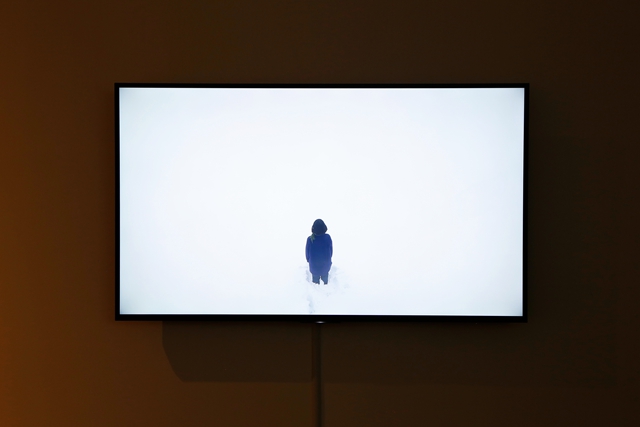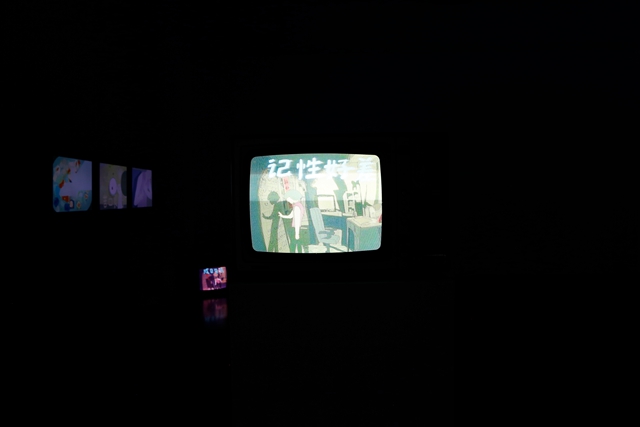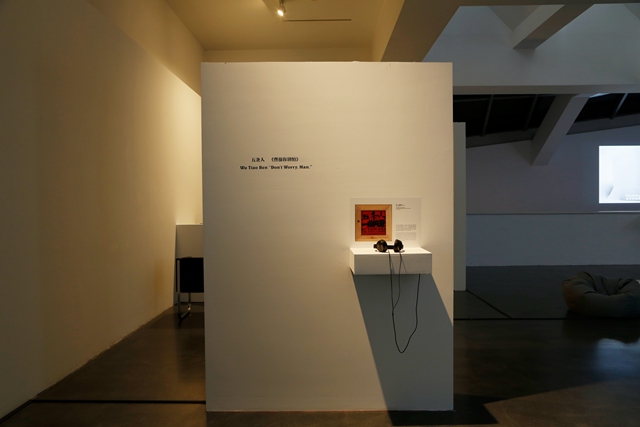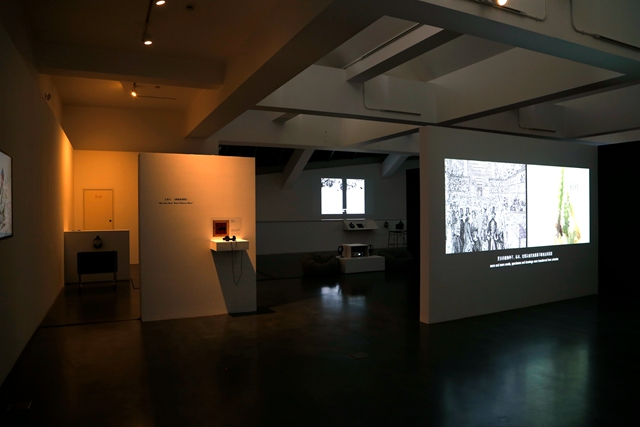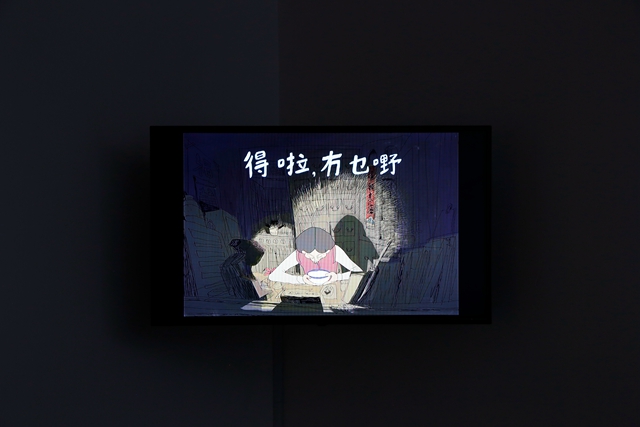
An Impulse to Turn
June 6 – October 8, 2020
Inside-Out Art Museum, No.50 Xingshikou Rd, Haidian District, Beijing
Curators: Huang Wenlong, Qian Mengni, Sun Gaorui
Visiting Curators: Liu Yusi, Zhang Zhihui
At the moment of accelerated dehistoricization in the Chinese society, Inside-Out Art Museum’s latest exhibition An Impulse to Turn presents the repeated readings and elaborations of historical remains by a number of contemporary artists and cultural practitioners. It is not at all a new phenomenon that contemporary studies have an increasing interest in the topics of history and memory. By selecting, reappropriating, and reinventing historical narratives and materials, contemporary artists attempt to understand the present and speculate the future, in search for unknown possibilities. For contemporary practitioners, in fact, history is not only a point of departure, but also a space of intervention. The turn to history is first of all an action, beyond merely a phenomenon.
When interpreting this phenomenon, people either routinely either carry a modernist scientific assumption, pursuing absolute, objective historical facts, or fall for the postmodernist, emphasizing contextualization and the relationality of historical materials and the non-existence of a single historical truth. Focusing prejudicially on historical facts and contexts involved in the works, we tend to overlook that these two interpretive paradigms themselves often lose or consume certain unexpressed and unspeakable interiority along the way. Examining the historical turn in art practice in these lights could well blind us from seeing the “turn” itself as an ambiguous action and the (un)consciously productive potential for reality that “turning” alone may entail. At the same time, artists are not historians, and their turn to history, rather than a historical study, is an open-ended exploration. The exhibition neither confines its interpretation within disciplinary boundaries, nor treats this turn to history as an end. We consider the wave of these artistic attemps as a movement worth further interpreting and understanding in its own right. Through highlighting this turn to history in contemporary practice in China and looking at the forms, aesthetics, practices, and the conditions of production that constitute this “turn”, the exhibition hopes to make explicit the productive and open-ended transformations that “turning” could bring about to the narration of history. It also hopes to prompt the audience to ponder on the multitude of possibilities for our current realities that “turning” could provoke.
In a well-known tale from the Old Testament, when Lot and his family fled the destruction, Lot’s wife disregarded the Angle’s admonition, and she became a pillar of salt after looking back. No one knows why Lot’s wife turned around. Such indescribable and irresistible temptation and impulse are also shared by creators who turn to historical remains. They find themselves ruminating with unclear directions, irresistibly visiting remnants of the past which have long lost their magic, or the idling ghosts of modernity. Visiting history is not to seek resolutions or destinations, but it is about the gesture of visiting in and by itself and its unavoidability.
This impulsive turn, far from simply reacting to dominant historical discourses, emphasizes the potential of recasting reality. Posited in between the ongoing polarities of excess and extreme lack of historical accounts, the selected works share an interest in tangible, accessible materials or individuals to engage history. In this way, history in tangible forms reconnects with the unexpressed, private interiority and becomes creatively reformulated into a more heterogeneous, inclusive iteration of reality. Oil shale and volcanos, the community workers club of the socialist industrialization era, journalistic and stage photography of 1950s China, traumas from war violence, the memory of kinship, and the recollection of childhood all constitute historical remains that artists choose to utilize. With a drone traversing the deserted Soviet-designed airport in China, photography closing up on deteriorating stelae and stone figures, tracing the trajectory of China’s modernization in several civil aircrafts, or the silent standing-still of a retired factory building and its former and current workers, the works all express an equal, reticent concern for individuals and material objects and their mutations. The materiality of these remnants thereby overwrites the linearity of an anthropocentric conception of history.
Artists part their ways with the progressive and linear narrative structure and go beyond the content to explore the intrinsic creative quality of historical materials through sampling, compression, editing, and collage. Archival materials in the forms of architecture, image, and sound come into contact with the mediums of the exhibited works, creating intertextual tensions. For example, when the images of the snowy landscape overlap with the oral history told by war victims, and when film dialogues from communist revolutionary cinema interweave with experimental music. Artists are no longer the external observers and narrators when they deal with the past that is malleable and tangible. Rather, they express in tandem with past materials through autobiographies, parodies, essay films, or performative documentation, participating in the unspeakable narrative world of historical remains. While the works in the exhibition explore memory of both human individuals and materials, they generate new connections and juxtapositions based on the individual and the private, producing another “truth” where individual meanings and historical facts intertwine.
Although where this “turn” may lead us remains unknown, the adoption of a wide range of mediums and materials, the inventive narration and appropriation of the past, and the diversification of narrating subjects nevertheless reveal that the historical turn in art practices is an act of expression and manifestation without specified beginnings or endings by unidentified, heterogeneous voices. The modern discipline of history consciously uses scientific methods to reach historical truth, a disciplinary methodological approach often taken for granted. Yet the history that the works in this exhibition turn to is characterized by uncertainty and flexibility. The intention and purpose of this turn is also frequently tacit, even intuitive and nebulous. This “turning” of plural, mysterious directions, stances, and ends prompts us to ask further: should we regard this “turn” as a response to the private memory that was unable to be externalized, or a contestation of and a resistance to the vanishing historical awareness and the alienated facts? When we take our turn alongside these works, reflecting on our contemporary assumptions in interpreting history, we might start choosing our objectives with more intentions, or turning back again more consciously; perhaps we might as well walk backwards, or run back to where we were. Such an impulse is irresistible, luring us to turn.
This exhibition is curated by Huang Wenlong, Qian Mengni, and Sun Gaorui, members of the Research and Curatorial Department of Inside-Out Art Museum. It also initiates the new Visiting Curator Program at the museum. Two young curators, Liu Yusi and Zhang Zhihui, were selected from many outstanding applicants. They joined the curatorial team since the conception of this exhibition and will participate in all aspects of this project.
Cao Minghao, Carsick Cars, Cheng Xinhao, Dou Wei + E-Band, Junyuan Feng & Jiahui Zeng, Feng Zilai, Avita Guo, Hang Tian, Hanggai Band, Li Hao, Li Luo, Li Ran, Li Yang, Liu Maoning, Ma Haijiao, Shen Xin, Sui Taca, Bo Wang & Pan Lu, Wu Tiao Ren, Yan Jun, Yang Luzi, Zhang Keying, Boat Zhang, Zheng Yuan, Zhou Xiaopeng
Walkthrough | Press

